Phagebiotics for a Healthy Life
Our health and longevity are closely related to the “health” of our microbiome – the community of microorganisms inhabiting the human body. The condition of this important “microbial organ” is continuously impacted by many factors, ranging from antibiotics to diet to stress. The use of bacterial viruses (phages) as probiotics having a gentle and targeted impact on microflora can help fine-tune the microbiome and, as a result, may help prevent both infections and non-infectious diseases, ranging from diarrheal diseases to certain forms of cancer. With the modern advances in phage biotechnology, bacteriophages are becoming an attractive platform technology based on which various commercial products can be developed for numerous applications, ranging from preventing and/or treating people and animals to improving the safety of our foods
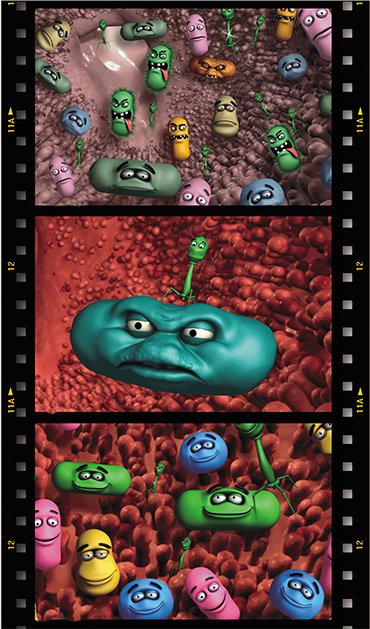 Although the temptation to use phages for any and all applications where bacteria present a problem may be strong, a careful and comprehensive analysis (cost, technical feasibility, competitive landscape, etc.) is warranted before embarking on a new phage-based product development program. Also, an important consideration would be the marketing strategy for bacteriophages. As explained later in this essay, although some phage preparations for human applications may be developed as “dietary supplements/probiotics,” others may be best suited for a typical “drug” development cycle. For example, a phage preparation that targets major diarrheagenic bacterial pathogens may be developed and marketed as an over-the-counter dietary supplement to be used prophylactically by people traveling in or to developing countries where the incidence of diarrheal bacterial diseases is high. Indeed, the FSU’s scientific literature contains many publications reporting the successful use of Shigella phages in humans (for a review, see (Goodridge 2013)).
Although the temptation to use phages for any and all applications where bacteria present a problem may be strong, a careful and comprehensive analysis (cost, technical feasibility, competitive landscape, etc.) is warranted before embarking on a new phage-based product development program. Also, an important consideration would be the marketing strategy for bacteriophages. As explained later in this essay, although some phage preparations for human applications may be developed as “dietary supplements/probiotics,” others may be best suited for a typical “drug” development cycle. For example, a phage preparation that targets major diarrheagenic bacterial pathogens may be developed and marketed as an over-the-counter dietary supplement to be used prophylactically by people traveling in or to developing countries where the incidence of diarrheal bacterial diseases is high. Indeed, the FSU’s scientific literature contains many publications reporting the successful use of Shigella phages in humans (for a review, see (Goodridge 2013)).
A more complicated scenario is using lytic phages to prevent and treat wounds often colonized/infected by multiple bacterial species. This situation is addressed by using complex/multivalent phage preparations containing several bacteriophages active against several bacterial pathogens known to interfere with wound healing. Two examples of such preparations are “Pyo-bacteriophage” produced by the Eliava Institute of Bacteriophages, Microbiology and Virology in Tbilisi, Georgia, and “Complex pyobacteriophage” produced by NPO Microgen. In the same context, the first phage therapy trial for human wound infections in the USA utilized a multivalent phage preparation containing eight different phages lytic for three bacterial pathogens commonly found in infected wounds: Escherichia coli, Staphylococcus aureus, and Pseudomonas aeruginosa (Rhoads, Wolcott et al., 2009).
The production and control over the quality of these preparations requires much more effort; therefore, it may be preferable to develop and sell them as conventional drugs.
It goes without saying that the commercialization of different products will vary essentially in terms of development costs, statutory regulation strategies, and timeframe.
Wholesale and custom-designed
Phage-based therapeutic preparations offer unprecedented flexibility for keeping up with the emergence of new highly pathogenic clones of various bacterial species, and with the emergence of phage-resistant mutants in bacterial populations. Phages have been co-evolving with their host bacteria for >3 billion years (Lenski 1984); therefore, when they are needed, it is relatively easy to isolate new environmental phages that can kill newly emerged pathogenic clones and/or phage-resistant bacterial mutants. From a practical standpoint, that approach will require monitoring the targeted pathogen’s phage-sensitivity, and updating the phage preparations as needed. The first part is not novel or particularly difficult because bacterial isolation and antibiotic-sensitivity testing are routine practices in all major hospitals, and similar testing could be implemented for bacteriophages – with some updates in medical infrastructure (e. g., high throughput phage sensitivity testing equipment) and by implementing phage-specific training protocols, but, in general, without too much difficulty. However, phage substitutions may be challenging from a regulatory standpoint. Updating phage preparations by replacing old phages with new, more effective phages has been commonly and successfully done in the FSU and EE. However, that practice may be novel for Western regulatory agencies accustomed to approving defined chemicals and requiring that each change in a preparation must be the subject of a new regulatory application. Having similar requirements for preparations containing naturally occurring phages that target a single or only a handful of bacterial pathogens will impede the development of new, effective phage-based therapeutics (Sulakvelidze 2012).
Phages are arguably the most ubiquitous organisms on Earth. For example:– The total number of phages on Earth has been estimated to be 1030-1031 plaque-forming units (PFU) (Bergh, Borsheim et al. 1989, Brussow and Hendrix 2002).
– One tablespoon (approx. 15 mL) of unpolluted water has been estimated to contain ca. 3 x 109 phage particles (Bergh, Borsheim et al., 1989).
– Phages are present – often in billions of PFU – in all of the fresh, unprocessed foods we eat. For example, bacteriophages have been commonly isolated from ground beef, pork sausage, chicken, farmed freshwater fish, common carp and marine fish, oil sardines, raw skim milk, cheese, and many “healthy foods,” including yogurt (reviewed in (Sulakvelidze and Kutter 2005)).
– Phages are common in the human mouth, where they are harbored in dental plaque and saliva (reviewed in (Sulakvelidze and Kutter 2005)).
– Phages are common in animal feeds, feed ingredients, and poultry diets (Maciorowski, Pillai et al., 2001).
Phages are the most common or the second most common commensals (after bacteria) of the normal GI tract’s microflora, where they coexist with various bacteria (Breitbart, Hewson et al., 2003, Sulakvelidze and Kutter 2005)
A positive development in that regard is the FDA’s flexibility regarding the use of phages for food safety applications. For example, that agency has allowed future updates of several “food safety” phage preparations in response to the emergence of new, phage-resistant strains of foodborne bacterial pathogens (Woolston and Sulakvelidze 2015). It remains to be seen whether a similar approach can be implemented for human therapeutic applications, but it should be pursued because it would enable optimal utilization of phage therapy’s potential public health benefits.
Some additional challenges may arise due to the specificity of bacteriophages. Since lytic phages are highly specific, mainstream commercial phage products may not be as effective against one or more strains of the targeted species that happen to predominate in a particular hospital or clinical center, or are isolated from a given patient (as has been reported by various investigators in the FSU; e. g., (Zhukov-Verezhnikov, Peremitina et al., 1978)). One possible approach for addressing this potential challenge is to (i) examine all isolated bacterial strains for their in vitro sensitivity to various phages (the availability of high throughput phage sensitivity screening equipment could be invaluable for the process), and (ii) select and use the phages exhibiting strong lytic potency against the strains causing the patients’ diseases. This type of “personalized medicine” approach is gaining attention in the West for many other medications. For example, it is similar, in principle, to how antibiotics are currently used in many clinics in the West, where bacterial strains are screened for their sensitivity to various antibiotics before prescribing the most effective antibiotic for a given patient. Thus, in order for phage therapy to reach its full potential, such “custom-designing” also must be implemented. From a technical standpoint, that approach should be doable: e. g., large libraries of well-characterized lytic phages could be assembled, and the technology for rapidly screening their activity against the isolated bacterial pathogens could be developed. However, it will require some creative, “out-of-the-box” thinking from the West’s regulatory agencies. Finally, logistics must be developed for this approach to be commercially viable. Thus, for optimal clinical applications, it may be feasible to initially establish a small number of reference phage clinics or centers where the appropriate technologies could be implemented by highly trained, specialized medical personnel caring for local patients or patients willing to travel to those institutions. The number and/or size of those reference centers could be increased as the required technology and well-trained personnel become available, and phage therapy (including the “personalized medicine” or “pharmacy approach”) could be eventually implemented in many other modern hospitals and clinical centers.
Phages as probiotics
Arguably, one of the most intriguing potential applications of bacteriophages is to use them as probiotics; i. e., to fine-tune GI tract microflora and/or other human microbiomes (e. g., the vagina, oral cavity, and skin. A very large proportion of the bacterial cells is found in the GI tract, which is colonized by an abundant and diverse microbiota that plays a significant role in mucosal protection, regulation of GI immune tolerance, digestion of fecal matter, and vitamin K synthesis. However, numerous factors (e. g., antibiotic treatment, diet, and psychological and physical stress) may lead to physiological disturbances in the gut’s microflora. Such alterations may contribute to many chronic and degenerative diseases, including rheumatoid arthritis and various inflammatory bowel diseases and “intestinal dysbioses.”
One of the approaches used to alleviate those disorders has been the ingestion of probiotic microorganisms; i. e., nonpathogenic microorganisms that improve health when ingested in sufficient quantities, presumably by beneficially altering the microbial balance of the human GI tract. Traditionally, various bacterial species have been used as components of such “probiotic cocktails,” with lactobacilli and bifidobacteria being the most commonly used and delivered in various commercial dietary supplements, healthy beverages, infant formulas, and other foods. A brief overview of probiotics is presented in several review articles are available; e. g., (Schrezenmeir and de Vrese 2001). On a somewhat oversimplified level, the rationale for using bacterial probiotics is that they colonize the gut, inhibit or prevent colonization by – and/or the proliferation of – potentially pathogenic microorganisms, and help to restore the healthy microbial balance of the GI tract. Bacterial probiotics have been markedly gaining in popularity in the USA and other countries around the world.
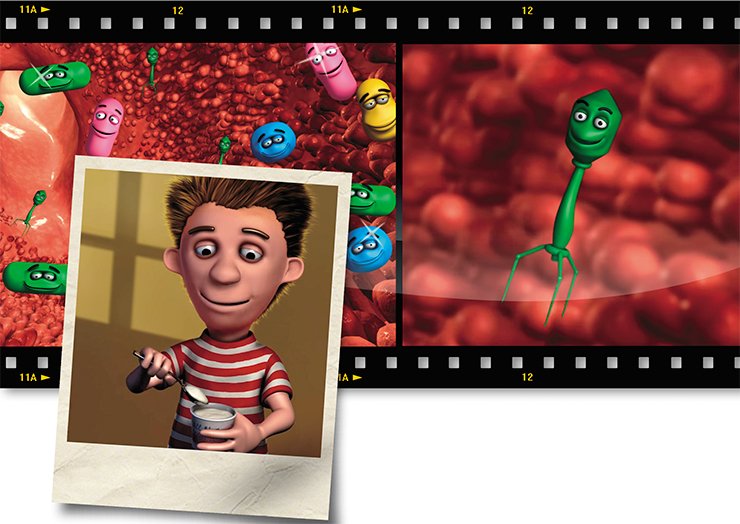
A novel probiotic approach is to use lytic phages as probiotics/dietary supplements for targeting “problem” bacteria. The key difference between bacterial probiotics and lytic phage-based probiotics (“phagebiotics”) is that the former use nonpathogenic bacteria to interfere with the ability of pathogenic bacteria to colonize and cause disease; whereas, the latter use lytic phage to kill specific pathogenic bacteria while preserving the commensal community. Phagebiotics are expected to have a very gentle effect on the overall microflora because of their high specific activity against specific bacterial species, which may further enhance their protective effects. Also, they are expected to be compatible – and, in fact, synergistic – with bacteria-based probiotics. Thus, the phage-based probiotic approach may serve as a platform technology for developing a new class of “phagebiotics” or “super-probiotics” for improving human health.
The therapeutic use of phages declined after antibiotics became widely available in the 1940s and 50s, and eventually all but stopped in the West. On the other hand, phage therapy continued to be utilized in the former Soviet Union (FSU) and Eastern Europe (EE) – and, on a much smaller scale, in France, Switzerland and Egypt (Sulakvelidze and Kutter 2005). Several hundred publications reporting various therapeutic applications of bacteriophages are available; however, most of them are in non-English (mostly Russian and Georgian) biomedical journals not widely available to the Western medical establishment. However, that situation is now gradually improving, with the recent publication (e. g., (Alisky, Iczkowski et al., 1998, Sulakvelidze and Kutter 2005) of several English-written reviews of the relevant FSU and EE literatureMany health issues could be potentially addressed by the “phagebiotics” approach, because phage-based probiotics can be used as new preventive means against numerous bacterial infections, including diarrheal diseases (e. g., those caused by Shigella spp.), diseases of the oral cavity (e. g., dental caries caused by Streptococcus mutans), skin and ocular diseases (e. g., acne, chronic blepharitis, and endophthalmitis caused by Propionibacterium acnes), and “women diseases” (e. g., bacterial vaginosis caused by Fusobacterium nucleatum).
Moreover, the phagebiotics approach may lead to new strategies for improving human health by advancing the prevention of noninfectious diseases elicited by one or more bacterial species in the human GI tract; e. g., obesity and some types of cancer that may be caused by certain bacteria inhabiting the GI tract (e. g., B 2 E. coli, Bacteroides fragilis, and Salmonella Typhi sometimes called “oncobacteria”). For example, chronic S. Typhi infections of the gall bladder have been reported (Dutta, Garg et al., 2000) to be associated with hepatobiliary cancers. Thus, phages that target S. Typhi may potentially help to reduce the risk of hepatobiliary cancers in susceptible populations.
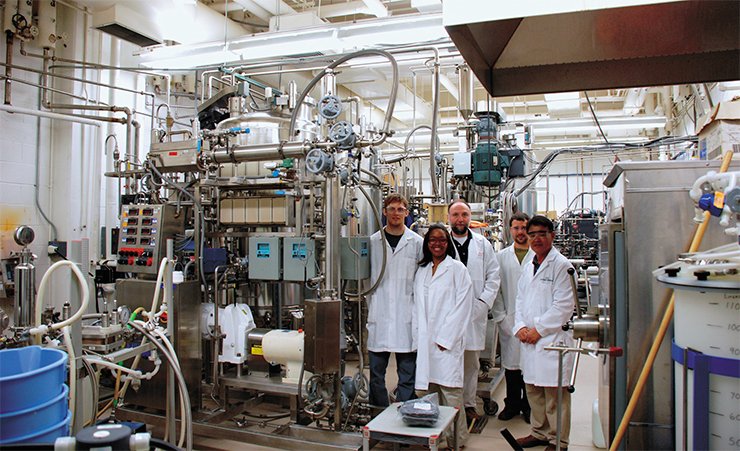
Finally, phages may be valuable tools for advancing our understanding of the important physiological roles that specific bacteria have in various mammalian microbiomes. For example, laboratory animal studies characterizing the local and systemic physiological changes occurring after using phages to eliminate or significantly reduce the levels of specific bacterial species in the GI tract may provide clues to the roles of those bacteria in that microbiome (i. e., a probiotic version of the “gene-knock-out” approach). This is truly a unique feature of bacteriophages since no other currently available antibacterial agents offer such a targeted approach against a specific subgroup of bacterial strains or species.
Phages as biocontrol agents
The concept of using phages for food safety applications has been slowly but steadily gaining acceptance in the USA, and the trend is likely to continue as more food processors recognize the advantage of using bacteriophages for improving the safety of the foods they produce, and consumers learn more about bacteriophages, including how ubiquitous they are in the environment and the foods we eat.
Naturally occurring bacteriophages may provide one of the safest and most environmentally-friendly approaches for reducing contamination of foods with foodborne bacterial pathogens (e. g., Listeria monocytogenes, pathogenic E. coli strains, and Salmonella spp.) without deleteriously affecting the nutritional value of the foods and their normal, and often beneficial, microflora. The approach of using phage-containing food safety products for direct food applications is based on adding an appropriate concentration of lytic bacteriophages active against the pathogenic bacteria contaminating the foods. If the foods are contaminated with pathogenic bacteria targeted by the bacteriophage preparations, the phages will eliminate or significantly reduce the concentrations of those bacteria in the foods, thus making them safer to eat. If the foods are not contaminated with the targeted foodborne bacteria, the phages will simply dissipate over time.
During the last few years, the FDA has approved several phage-based preparations for food safety applications. (Sulakvelidze 2012, Woolston and Sulakvelidze 2015). The first phage-based preparation for food safety applications cleared by the FDA was ListShield™, which was developed and marketed by Intralytix, Inc. This was the first and, to date, the only phage-based product approved as a food additive by the FDA. The preparation is active against L. monocytogenes in various foods, including ready-to-eat foods.
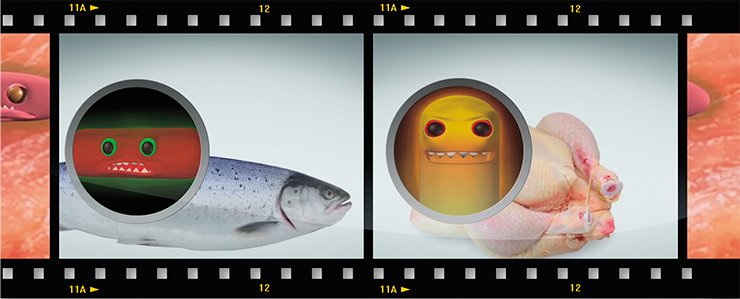
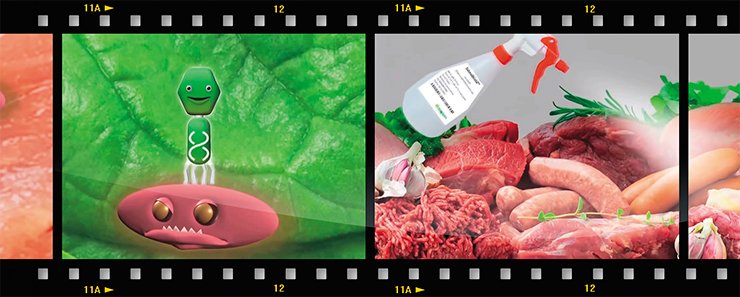
Several more recent food safety approvals for phages have been under the GRAS (Generally Recognized As Safe) status, and it is likely that most, if not all, future phage products for food safety applications (and possibly for “probiotic” applications, see below) also will be marketed in the USA under the GRAS status.
Many of the phage preparations for food safety applications (including ListShield™) are free of preservatives and do not alter the general composition, taste, aroma or color of foods. Also, some of them are Kosher- and Halal-certified, and are listed by the Organic Materials Review Institute (or equivalent), which makes them suitable for use in the production of organic foods (Woolston and Sulakvelidze 2015).
Surely, to make phage therapy widely available throughout the world, some problems including technical ones need to be handled (Sulakvelidze and Kutter 2005, Sulakvelidze 2011). However, given the ever-increasing threat of antibiotic-resistant mutants, and potential of bacteriophages to provide a safe and effective approach for managing various bacterial diseases caused by multi-antibiotic-resistant bacteria, robust efforts to integrate this natural antibacterial approach into modern day medicine are long overdue.
The “probiotic” use of phages, in particular, is very intriguing, and several phage-based probiotic preparations are likely to be developed during the next several years. Initially, they may be designed to prevent and treat diarrheal diseases of well-defined bacterial etiology (e. g., shigellosis).
Ultimately, the phagebiotic approach can help to support the overall normal bacterial flora, which will prevent many diseases including non-contagious ones. Being a unique tool for studying, fine-tuning, and improving the most important “microbial organ” of the human body, phages can play an important role in our lives.
References
Alisky, J., K. Iczkowski, A. Rapoport and N. Troitsky. Bacteriophages show promise as antimicrobial agents // J. Infect. 1998. V. 36(1). P. 5—15.
Bergh, O., K. Y. Borsheim, G. Bratbak and M. Heldal. High abundance of viruses found in aquatic environments // Nature. 1989. V. 340(6233). P. 467—468.
Breitbart, M., I. Hewson, B. Felts, et al. Metagenomic analyses of an uncultured viral community from human feces // J. Bacteriol. 2003. V. 185(20). P. 6220—6223.
Lenski, R. E. Coevolution of bacteria and phage: are there endless cycles of bacterial defenses and phage counterdefenses? J. Theor. Biol. 1984. V. 108(3). P. 319—325.
Maciorowski, K. G., S. D. Pillai and S. C. Ricke. Presence of bacteriophages in animal feed as indicators of fecal contamination // J. Environ Sci. Health. 2001. V. 36(5). P. 699—708.
Rhoads, D. D., R. D. Wolcott, M. A. Kuskowski, et al. Bacteriophage therapy of venous leg ulcers in humans: results of a phase I safety trial // J. Wound Care. 2009. V. 18(6). P. 237—238, 240—233.
Sulakvelidze, A. Challenges of bacteriophage therapy. Industrial Pharmaceutical Microbiology // N. Hodges and G. Hanlon. Passfield, England, Euromed Communications, Ltd. 2012. S13.11—S13.20.
Sulakvelidze, A., E. Kutter. Bacteriophage therapy in humans. Bacteriophages // Biology and Application. E. Kutter, A. Sulakvelidze. Boca Raton, FL, CRC Press. 2005. P. 381—436.
Woolston, J., A. Sulakvelidze. Bacteriophages and food safety eLS. Chichester, John Wiley & Sons, Ltd. 2015.
Zhukov-Verezhnikov, N. N., L. D. Peremitina, E. A. Berillo et al. (1978). Therapeutic effect of bacteriophage preparations in the complex treatment of suppurative surgical diseases // Sov. Med. 1978. V. 12. P. 64—66.
The photos are by the courtesy of the author









